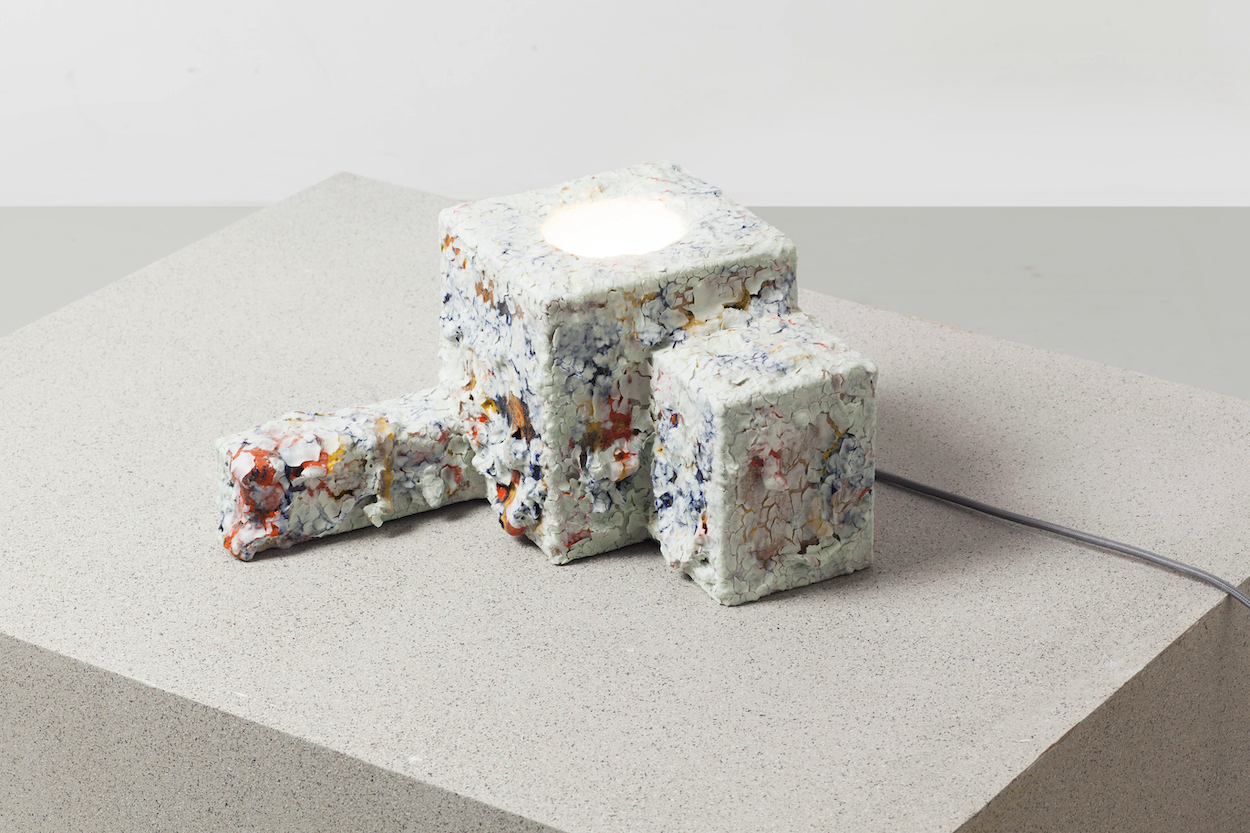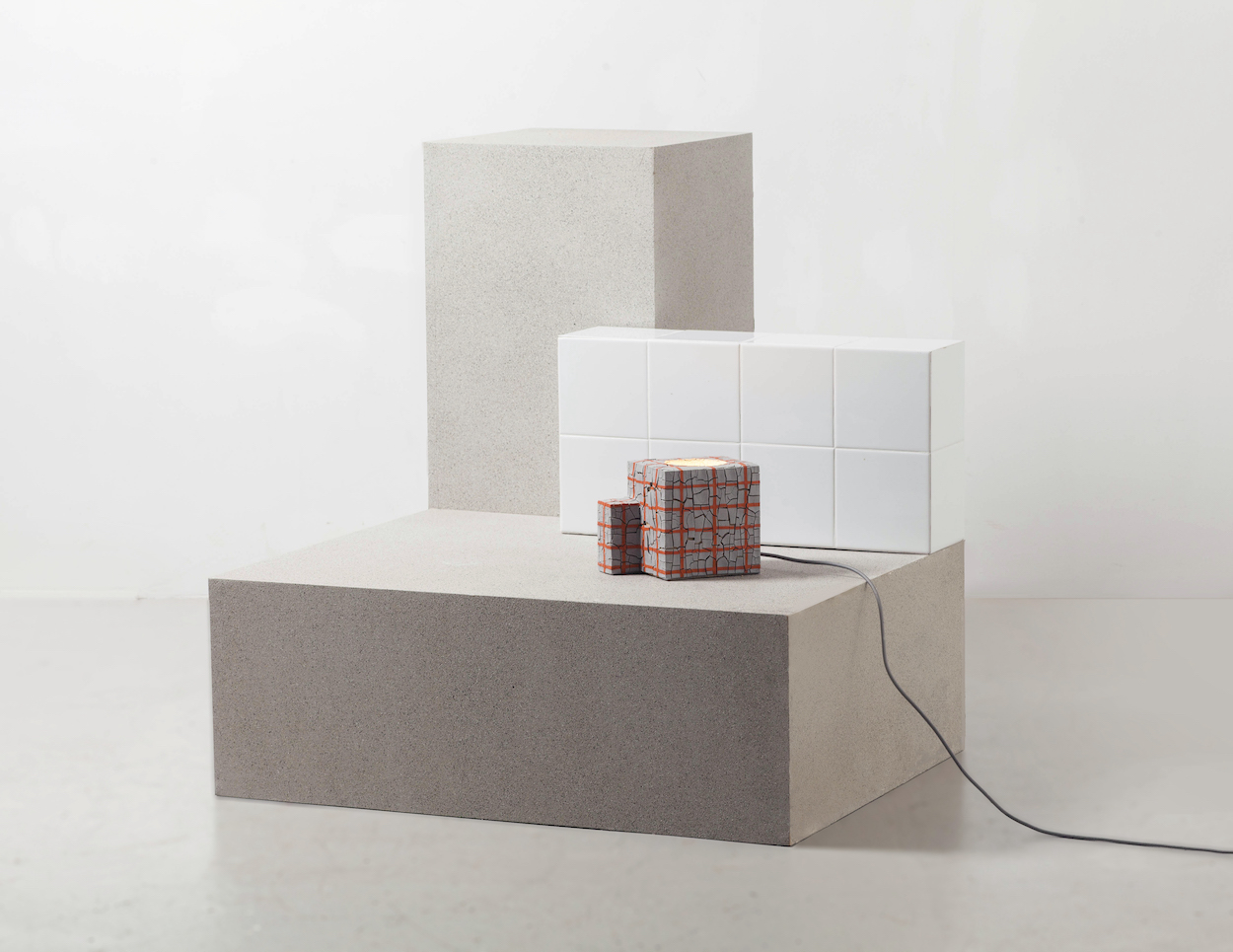Here, we ask designers to take a selfie and give us an inside look at their life.
Age: 30
Occupation: Artist/educator.
Instagram: @irina.r.art
Hometown: Leningrad.
Studio location: London.
Describe what you make: Ceramics and painting.
Here, we ask designers to take a selfie and give us an inside look at their life.
Age: 30
Occupation: Artist/educator.
Instagram: @irina.r.art
Hometown: Leningrad.
Studio location: London.
Describe what you make: Ceramics and painting.

The most important thing you’ve designed to date: As previously to the current design collection, I was mostly working sculpturally. My preferences would always change. One of my favorite projects was a commission for the British ceramic Biennial, where I had to create a site-specific work for an abandoned porcelain factory. In terms of design objects, my latest collection is called Gruz. As I’m writing this, the pieces are fresh out of the kiln, and I haven’t been able to distance myself enough to tell which one is better.
Describe the problem your work solves: Generally speaking, without touching any of the concepts in particular, it solves a problem of a consumerist attitude towards culture and aesthetics. My pieces take a long time to appreciate and one can endlessly watch the micro-cosmos of the textures and details, along with the monumental overall shape.
Describe the project you are working on now: It’s a collaborative project called Gruz done with and for Aybar Gallery. It includes sculptural collectible design objects made of clay: lamps, side tables, and sculptural pieces.
When I was planning this collection, I decided to reflect on my own aesthetic and material heritage: Born in Leningrad, the city that no longer exists, in the country that no longer exists either. I remember these constructivist and Soviet giants, buildings that are crumbling and falling apart due to harsh climate and poor quality of cement. It’s a very poetic metaphor—how the hopes and beliefs of a whole nation can just disappear. How the truths, mistakes, and ambitions are just temporary. So I decided to make material objects that, on one hand, exist in this moment, but seem to be disappearing, crumbling, melting down, and decaying. They’re made of clay, the most permanent material ever, but they’re “frozen” in a moment of ceasing to exist.
A new or forthcoming project we should know about: I’ve worked on Gruz for the whole duration of lockdown, almost a year. Finally, everything is ready and the launch should happen online in April. The collection consists of two types of works, Archi and Grid, both of which include tables, lamps, and sculptural pieces.

What you absolutely must have in your studio: Podcasts. Paper and pencils. My studio usually is quite messy and chaotic, and things are sometimes hard to find, so I always make sure that something to scribble a new idea on is always at hand. Also, a coffee maker is essential! And rice crackers with yogurt coating.
What you do when you’re not working: Before lockdown happened, I’d go to the opera or ballet at least once a week, visited a lot of museums and galleries, and traveled, especially to Rome, my favorite city. In the past year, I mostly walk my dog Pickwick, cook something weird and quick, and listen to podcasts. Also, during lockdown, I started teaching both in Royal College of Art London and online, as I’ve launched an online education platform for Russian artists. So now it’s kind of “when I don’t work, I work.”
Sources of creative envy: Cy Twombly, Edmund de Waal, and Sterling Ruby.
The distraction you want to eliminate: My phone of course.

Concrete or marble? Concrete.
High-rise or townhouse? I would always swear I’d prefer high-rises any day, but now I live in a house and I love it.
Remember or forget? Forget.
Aliens or ghosts? Really? Ghosts then.
Dark or light? Light.